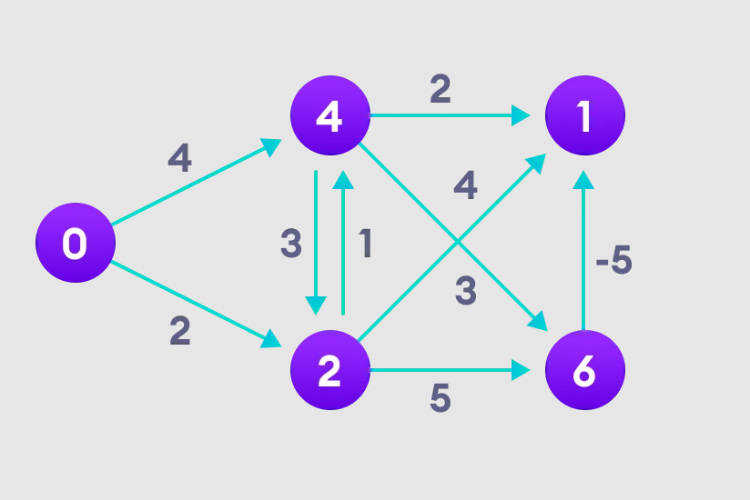贝尔曼福特算法(Bellman Ford)可以找到从目标节点到加权图其他节点的最短路径。这一点和Dijkstra算法很相似,贝尔曼福特算法可以处理负权重的图,从实现来看也相对简单。
贝尔曼福特算法原理详解
贝尔曼福特算法通过高估从起始顶点到所有其他顶点的路径长度,迭代寻找比高估路径更短的新路径。
因为我们要记录每个节点的路径距离,可以将其存储在大小为n的数组中,n也代表了节点的数量。
实例图

1、选择起始节点,并无限指定给其他所有顶点,记录路径值。

2、访问每条边,并进行松弛操作,不断更新最短路径。

3、我们需要这样做N-1次,因为在最坏的情况下,最短节点路径长度可能需要重新调整N-1次。

4、注意右上角的节点是如何调整其路径长度的。

5、在所有节点都有路径长度之后,再检查是否存在负环路。

Python实现贝尔曼福特算法
class Graph:
def __init__(self, vertices):
self.V = vertices # Total number of vertices in the graph
self.graph = [] # Array of edges
def add_edge(self, s, d, w):
self.graph.append([s, d, w])
def print_solution(self, dist):
print("Vertex Distance from Source")
for i in range(self.V):
print("{0}\t\t{1}".format(i, dist[i]))
def bellman_ford(self, src):
dist = [float("Inf")] * self.V
dist[src] = 0
for _ in range(self.V - 1):
for s, d, w in self.graph:
if dist[s] != float("Inf") and dist[s] + w < dist[d]:
dist[d] = dist[s] + w
for s, d, w in self.graph:
if dist[s] != float("Inf") and dist[s] + w < dist[d]:
print("Graph contains negative weight cycle")
return
self.print_solution(dist)
g = Graph(5)
g.add_edge(0, 1, 5)
g.add_edge(0, 2, 4)
g.add_edge(1, 3, 3)
g.add_edge(2, 1, 6)
g.add_edge(3, 2, 2)
g.bellman_ford(0)



